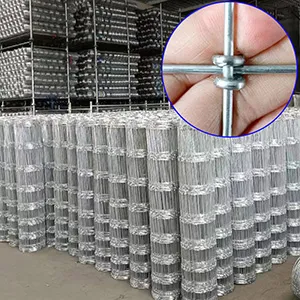-
+86 15030157877
-
sales@galvanizedmetalmesh.com
Jul . 20, 2024 12:28 Back to list
Galvanized Steel Grating Cover for Effective Drainage Solutions in Various Applications
The Importance of Galvanized Steel Floor Drain Grating Covers
In various industrial and commercial settings, effective waste management and drainage systems are crucial for maintaining hygiene and preventing structural damage. One significant component of these systems is the floor drain grating cover, and when it is made of galvanized steel, it provides exceptional benefits that outweigh other material options.
Galvanized steel refers to steel that has been coated with a layer of zinc to prevent rust and corrosion. This protective layer is especially beneficial in environments where exposure to moisture and chemicals is a concern. Floor drain grating covers constructed from galvanized steel are designed to endure tough conditions, making them ideal for both indoor and outdoor use.
Durability and Corrosion Resistance
One of the primary advantages of galvanized steel floor drain grating covers is their durability. Unlike plastic or untreated metals, galvanized steel can withstand significant wear and tear. It is resistant not just to rust but also to various abrasions that can occur in high-traffic areas. This durability ensures that the covers last longer, reducing the need for frequent replacements and maintenance, which can become a costly endeavor for businesses.
Safety Features
Safety is another crucial factor in the design of floor drain grating covers. Galvanized steel grating provides a slip-resistant surface, which is essential in areas prone to spills or flooding. This feature minimizes the risk of accidents, protecting both employees and visitors in workplaces like restaurants, factories, warehouses, and commercial kitchens. The open design of these grates also facilitates effective drainage, preventing water accumulation that could lead to dangerous slip hazards.
Aesthetic Appeal
galvanized steel floor drain grating cover

Despite the industrial nature of galvanized steel, the material can offer a clean and professional look when incorporated into a facility's design. Many modern businesses place importance on aesthetics, and galvanized steel grating covers blend functionality with style. They can be finished with different coatings or colors, allowing businesses to maintain a cohesive appearance within their operational spaces.
Environmental Benefits
Choosing galvanized steel over plastic alternatives can also be a more environmentally friendly decision. Steel is a recyclable material, and its longevity means that less waste is generated through frequent replacements. Additionally, the manufacturing process of galvanized steel often has a lower environmental impact compared to the production of plastics, which can contribute to pollution and hazards in landfills.
Versatile Applications
Galvanized steel floor drain grating covers are versatile and can be adapted for various applications. They are suitable for use in diverse environments, ranging from commercial kitchens, where they endure fats and oils, to manufacturing plants that may process heavy machinery or chemicals. Their robust design ensures that they can handle different weights and pressures, making them a reliable choice across multiple sectors.
Conclusion
In conclusion, galvanized steel floor drain grating covers are an essential investment for any facility aiming to maintain a clean, safe, and efficient environment. With their unmatched durability, safety features, aesthetic appeal, and environmental benefits, these covers present a comprehensive solution to effective drainage systems. As businesses continuously strive to enhance operational efficiency while managing safety and aesthetic standards, the role of galvanized steel must not be overlooked. By choosing galvanized steel for floor drain grating covers, organizations can ensure they are well-equipped to handle the challenges posed by their specific environments, ultimately leading to better management of waste and drainage systems.
-
Premium Welded Gabion Mesh | Robust & Eco-Friendly
NewsJul.31,2025
-
Premium Eco-Friendly Roof Tiles | Affordable & Durable
NewsJul.31,2025
-
Premium Roof Tiles for Durable & Stylish Roofing Solutions
NewsJul.30,2025
-
High-Quality Roof Tiles for Durable & Stylish Roofing Solutions
NewsJul.29,2025
-
High Quality Square Wire Mesh Manufacturer & Supplier for Wholesale
NewsJul.29,2025
-
Premium Roof Tiles for Durable & Stylish Roofing Solutions
NewsJul.29,2025



